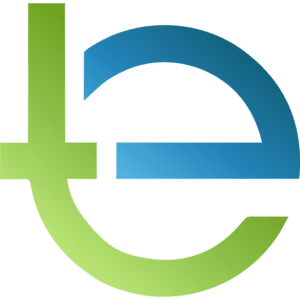NURS FPX 6410 Assessment 3
Capella University
FPX-6410
March 2024
NURS FPX 6410 Assessment 3 Exploration of Regulations and Implications for Practice
Exploring regulations and their implications for practice is essential in informatics, where adherence to legal and ethical standards is paramount. Regulations serve as guiding frameworks that dictate how healthcare organizations collect, manage, and protect patient data (Winter & Davidson, 2022).
Understanding these regulations is crucial for informatics professionals to ensure compliance and mitigate potential risks, such as data breaches or privacy violations.
By comprehensively exploring regulations and their implications, healthcare organizations can establish robust policies and practices that uphold patient confidentiality and integrity while harnessing the power of informatics to drive positive outcomes. This assessment sets the stage for a deeper dive into how informatics can facilitate dynamic and evidence-based practices within healthcare organizations, ultimately leading to improved patient care and organizational effectiveness.
Safety Issue Involved
The informatics project plays a pivotal role in addressing safety issues within the organization. By providing a constant stream of data, informatics allows for the identification and analysis of potential safety concerns throughout various healthcare processes. This includes tracking medication errors, identifying gaps in patient care delivery, and monitoring the effectiveness of safety protocols and interventions. Furthermore, informatics enables proactive measures to be taken to prevent adverse events by initiating and revising practices and policies based on real-time data insights.
Through electronic health record (EHR) systems, healthcare providers can implement clinical decision-support tools to flag potential drug interactions or allergies, thereby enhancing medication safety (Elchynski et al., 2021). Additionally, informatics facilitates a comprehensive review and analysis of safety initiatives, allowing for the sharing of evidence-based practice examples that promote continuous improvement and drive positive outcomes. By leveraging informatics to address safety issues, organizations can enhance patient care quality, mitigate risks, and uphold their commitment to patient safety and well-being.
Informatics Model & Safe Practice
The integration of informatics models into healthcare practices exemplifies a dynamic approach to ensuring safe practices within organizations. By leveraging informatics models, such as the Systems Theory or the Socio-Technical Systems Model, healthcare entities can systematically analyze processes, identify potential safety gaps, and implement targeted interventions to mitigate risks and enhance patient safety (Iott et al., 2021). For instance, applying the Systems Theory allows healthcare professionals to understand the interconnectedness of various components within the healthcare system, including technology, human factors, and organizational structures, thereby facilitating a comprehensive assessment of safety practices. Similarly, the Socio-Technical Systems Model emphasizes the importance of considering both technical and social aspects when implementing informatics solutions, enabling organizations to address safety concerns from a holistic perspective.
Moreover, adhering to standards of practice in nursing informatics is essential for promoting safe practices and addressing gaps within healthcare settings. Standards such as those outlined by the American Nurses Association (ANA) provide a framework for evaluating and improving the quality of care delivery while ensuring adherence to ethical and legal principles (Noel et al., 2022). For example, applying ANA standards related to patient-centered care and evidence-based practice enables healthcare organizations to prioritize patient needs and integrate the latest research findings into clinical decision-making processes, thus enhancing patient safety. By aligning informatics initiatives with established standards of practice, organizations can effectively address safety concerns, drive continuous improvement, and ultimately optimize patient outcomes in healthcare settings.
Intended Goals
The informatics project under consideration aims to enhance organizational dynamics and foster continuous improvement through the utilization of data-driven strategies. The intended goals of this initiative encompass several key objectives aimed at optimizing outcomes within the healthcare organization. Firstly, the project seeks to establish a robust data infrastructure capable of capturing, analyzing, and disseminating relevant data on various aspects of healthcare delivery.
This includes patient outcomes, clinical processes, resource utilization, and compliance with regulatory standards. Secondly, the initiative aims to leverage data analytics and informatics tools to identify areas of improvement and implement evidence-based interventions aimed at enhancing patient care quality, safety, and efficiency (Tucker et al., 2021). Additionally, the project intends to promote a culture of evidence-based practice and continuous learning by fostering collaboration among multidisciplinary teams and encouraging the sharing of best practices and lessons learned from data analysis. Overall, the overarching goal of the informatics project is to drive positive outcomes by harnessing the power of data to inform decision-making, drive process improvements, and ultimately enhance the delivery of care within the organization.
NURS FPX 6410 Assessment 3 Exploration of Regulations and Implications for Practice
Outcomes
The informatics project implemented within the organization has yielded significant outcomes, driving positive changes and improvements across various facets of healthcare delivery. Through the utilization of informatics tools and data analytics, the project has facilitated a deeper understanding of patient outcomes, clinical processes, and resource utilization patterns (Batko & Ślęzak, 2022). As a result, the organization has been able to identify areas for enhancement and implement targeted interventions to address them effectively. For instance, the project has led to reductions in medication errors by implementing electronic prescribing systems and decision-support tools, thereby improving patient safety and outcomes.
Additionally, the project has optimized resource allocation by analyzing utilization patterns and reallocating resources accordingly, resulting in improved operational efficiency and cost savings (Etges et al., 2020). Furthermore, the project has enhanced communication and collaboration among healthcare teams by implementing electronic health records and telemedicine platforms, resulting in enhanced coordination of care and increased patient satisfaction. Overall, the outcomes of the informatics project underscore its effectiveness in driving positive changes and improvements within the organization, highlighting the transformative impact of informatics on healthcare delivery.
Applying the Standards of Practice
Applying the standards of practice in nursing informatics is crucial for ensuring safe and effective healthcare delivery while addressing any existing gaps in practice. By adhering to established standards, healthcare institutions can maintain patient safety, enhance clinical results, and elevate the overall quality of healthcare delivery. The integration of standardized protocols for electronic health record (EHR) documentation ensures consistency and accuracy in data recording, facilitating seamless communication and collaboration among healthcare providers. Additionally, the application of interoperability standards enables facilitating the transfer of healthcare data among diverse systems fosters seamless continuity of care, and diminishes interruptions in medical errors (Miandoab et al., 2023).
Furthermore, adherence to ethical and legal standards in HIPAA, safeguards patient privacy and confidentiality, fostering trust between patients and healthcare providers. Through the application of these standards, nursing informatics professionals can identify and address gaps in practice, ultimately contributing to improved patient outcomes and organizational excellence. This approach is supported by professional literature, which emphasizes the importance of aligning informatics practices with established standards to promote safe and effective healthcare delivery. Studies by Alruwaili et al. (2023) have demonstrated the positive impact of standardized informatics practices on patient safety, clinical efficiency, and overall healthcare quality, underscoring the significance of applying standards of practice in nursing informatics to drive positive outcomes in healthcare settings.
Impacts of Regulatory Constraints
The impacts of regulatory constraints on the use of health information technology (HIT) in nursing practice and organizational operations are substantial and multifaceted. Regulatory entities such as the Health Insurance Portability and Accountability Act (HIPAA) and the Centers for Medicare & Medicaid Services (CMS), impose stringent rules and requirements to guarantee the confidentiality, privacy, and authenticity of patient health data. These regulations dictate the design, implementation, and maintenance of HIT systems, influencing every aspect of their utilization within healthcare settings. For instance, healthcare organizations must allocate resources toward implementing robust cybersecurity measures aimed at safeguarding against data breaches and unauthorized access, as mandated by HIPAA’s Security Rule (Argaw et al., 2020). Additionally, CMS regulations regarding electronic health record (EHR) documentation standards compel healthcare providers to adhere to specific coding and documentation guidelines to ensure accurate billing and reimbursement.
Moreover, regulatory constraints impact the interoperability and exchange of health information between different systems and organizations, hindering seamless communication and collaboration among healthcare providers. These constraints can impede the implementation of innovative technologies and practices, slowing down the pace of digital transformation in healthcare. For example, stringent regulatory requirements may delay the adoption of telehealth solutions or mobile health applications, restricting the availability of healthcare services for individuals residing in remote or underserved regions (Barbosa et al., 2021). Furthermore, compliance with regulatory constraints necessitates continuous education and training initiatives for healthcare practitioners to ensure adherence to best practices and standards, adding to the operational burden and resource allocation for healthcare organizations. In light of these challenges, nursing informatics professionals and healthcare leaders need to navigate regulatory constraints effectively, leveraging technology to promote safe, efficient, and patient-centered care.
Structure of Ethical & Legal Practices
Integrating ethical and legal practices into the delivery of quality healthcare using technology is paramount for ensuring patient safety, privacy, and autonomy across various healthcare environments. Ethical principles serve as guiding frameworks for healthcare professionals to navigate complex ethical dilemmas and decision-making processes in the context of informatics.
For instance, respecting patient autonomy entails obtaining informed consent for the collection, use, and disclosure of health information, thereby upholding patients’ rights to privacy and self-determination (Wiertz & Boldt, 2022). Moreover, healthcare organizations must adhere to legal mandates, including HIPAA regulations, state privacy laws, and professional codes of conduct, to safeguard patient data and maintain compliance with regulatory requirements. By integrating ethical and legal considerations into informatics practices, healthcare providers can foster trust, transparency, and accountability within their professional endeavors in their interactions with patients and stakeholders, fostering a culture of ethical practice and responsible data stewardship.
Critiquing the structure for ethical and legal practices in the context of using the science of informatics reveals both opportunities and challenges in upholding ethical standards and legal compliance. While informatics offers innovative solutions for enhancing patient care, research, and organizational efficiency, it also introduces complexities and risks related to data security, privacy breaches, and information governance.
The rapid evolution of technology often outpaces the development of ethical guidelines and legal frameworks, creating ethical dilemmas and uncertainties for healthcare professionals and organizations. Moreover, the accessibility of technology and proficiency in digital literacy might exacerbate prevailing healthcare disparities, raising concerns about fairness and justice in delivering digital health services (Romero et al., 2022). Therefore, a critical examination of the structure for ethical and legal practices in informatics is essential to identify gaps, mitigate risks, and promote ethical decision-making and responsible use of technology in healthcare.
NURS FPX 6410 Assessment 3 Exploration of Regulations and Implications for Practice
Stakeholders
In the realm of informatics, effective communication with stakeholders plays a pivotal role in guaranteeing the precise and effective conveyance of data, information, and strategies throughout healthcare establishments. By engaging both internal and external stakeholders, such as healthcare providers, administrators, patients, and regulatory agencies, organizations can facilitate collaborative decision-making processes and foster a shared understanding of informatics initiatives (Harrison & Shortell, 2020). Through clear and transparent communication channels, stakeholders are empowered to contribute insights, identify potential challenges, and align strategies with organizational goals and priorities.
Moreover, communication serves as a mechanism for disseminating evidence-based practice examples derived from informatics projects, thereby demonstrating the tangible benefits and positive outcomes that result from leveraging data-driven approaches in healthcare delivery. By establishing open lines of communication, healthcare organizations can cultivate an environment conducive to ongoing enhancement and innovation, where stakeholders are actively involved in driving positive change and optimizing patient care outcomes. This approach to stakeholder engagement is supported by the literature, which emphasizes the importance of transparent communication and collaboration in achieving successful informatics implementations and promoting organizational readiness for technological advancements in healthcare.
Conclusion
In conclusion, informatics is a dynamic force driving positive change within healthcare organizations. Through the utilization of data and technology, organizations can continuously measure outcomes, refine practices, and adapt policies to meet evolving healthcare needs. Through comprehensive review processes, evidence-based practice examples emerge, providing valuable insights and guiding decision-making towards improved patient care. Furthermore, informatics facilitates collaboration and transparency among stakeholders, fostering a culture of innovation and continuous improvement. As organizations embrace informatics principles and integrate them into their operations, they position themselves for success in a rapidly evolving healthcare landscape, where data-driven approaches are essential for delivering high-quality, patient-centered care.
References
Alruwaili, M. M., Shaban, M., & Ramadan, O. M. (2023). Digital health interventions for promoting healthy aging: A systematic review of adoption patterns, efficacy, and user experience. Sustainability, 15(23), 16503. https://www.mdpi.com/2071-1050/15/23/16503
Argaw, S. T., Pastoriza, J. R., Lacey, D., Florin, M. V., Calcavecchia, F., Anderson, D., Burleson, W., Vogel, J. M., O’Leary, C., Chauvin, B., & Flahault, A. (2020). Cybersecurity of hospitals: Discussing the challenges and working towards mitigating the risks. BMC Medical Informatics and Decision Making, 20(1).https://bmcmedinformdecismak.biomedcentral.com/articles/10.1186/s12911-020-01161-7
Barbosa, W., Zhou, K., Waddell, E., Myers, T., & Dorsey, E. R. (2021). Improving access to care: Telemedicine across medical domains. Annual Review of Public Health, 42(1), 463–481.https://www.annualreviews.org/content/journals/10.1146/annurev-publhealth-090519-093711
Batko, K., & Ślęzak, A. (2022). The use of big data analytics in healthcare. Journal of Big Data, 9(1). https://journalofbigdata.springeropen.com/articles/10.1186/s40537-021-00553-4
Elchynski, A. L., Desai, N., D’Silva, D., Hall, B., Marks, Y., Wiisanen, K., Cicali, E. J., Cavallari, L. H., & Nguyen, K. A. (2021). Utilizing a human–computer interaction approach to evaluate the design of current pharmacogenomics clinical decision support. Journal of Personalized Medicine, 11(11), 1227. https://www.mdpi.com/2075-4426/11/11/1227
Etges, A. P. da S., Ruschel, K. B., Polanczyk, C. A., & Urman, R. D. (2020). Advances in value-based healthcare by the application of time-driven activity-based costing for inpatient management: A systematic review. Value in Health: The Journal of the International Society for Pharmacoeconomics and Outcomes Research, 23(6), 812–823. https://www.valueinhealthjournal.com/article/S1098-3015(20)30130-3/fulltext?_returnURL=https%3A%2F%2Flinkinghub.elsevier.com%2Fretrieve%2Fpii%2FS1098301520301303%3Fshowall%3Dtrue
NURS FPX 6410 Assessment 3 Exploration of Regulations and Implications for Practice
Harrison, M. I., & Shortell, S. M. (2020). Multi-level analysis of the learning health system: Integrating contributions from research on organizations and implementation. Learning Health Systems, 5(2), e10226. https://onlinelibrary.wiley.com/doi/10.1002/lrh2.10226
Iott, B. E., Eddy, C., Casanova, C., & Veinot, T. C. (2021). More than a database: Understanding community resource referrals within a socio-technical systems framework. AMIA Annual Symposium Proceedings, 2020, 583–592. https://pmc.ncbi.nlm.nih.gov/articles/PMC8075446/
Miandoab, A., Soltani, T., Jodati, A., & Hachesu, P. (2023). Interoperability of heterogeneous health information systems: A systematic literature review. BMC Medical Informatics and Decision Making, 23(1). https://bmcmedinformdecismak.biomedcentral.com/articles/10.1186/s12911-023-02115-5
Noel, L., Chen, Q., Petruzzi, L. J., Phillips, F., Garay, R., Valdez, C., Aranda, M. P., & Jones, B. (2022). Interprofessional collaboration between social workers and community health workers to address health and mental health in the United States: A systematized review. Health & Social Care in the Community, 30(6). https://onlinelibrary.wiley.com/doi/10.1111/hsc.14061?__cf_chl_tk=TTm2ddbs75paC1Xc717F45KXAzMcO9Hm0277nHiT4YI-1729764207-1.0.1.1-kZBgWkEdSbDmsI6pRMokNSNHW7PCf.wsJXNUhG_vV_k
Romero, O., Gabarron, E., Shatz, T., Petersen, C., & Denecke, K. (2022). Social media, digital health literacy, and digital ethics in the light of health equity. Yearbook of Medical Informatics, 31(1). https://www.thieme-connect.de/products/ejournals/abstract/10.1055/s-0042-1742503
Tucker, S., McNett, M., Melnyk, B., Hanrahan, K., Hunter, S. C., Kim, B., Cullen, L., & Kitson, A. (2021). Implementation science: Application of evidence‐based practice models to improve healthcare quality. Worldviews on Evidence-Based Nursing, 18(2), 76–84. https://sigmapubs.onlinelibrary.wiley.com/doi/10.1111/wvn.12495
Wiertz, S., & Boldt, J. (2022). Evaluating models of consent in changing health research environments. Medicine, Health Care and Philosophy, 25(2), 269–280, https://link.springer.com/article/10.1007/s11019-022-10074-3
Winter, J. S., & Davidson, E. (2022). Harmonizing regulatory regimes for the governance of patient-generated health data. Telecommunications Policy, 46(5), 102285. https://www.sciencedirect.com/science/article/abs/pii/S0308596121001890?via%3Dihub
NURS FPX 6410 Assessment 3 Exploration of Regulations and Implications for Practice
View more MSN sample papers






